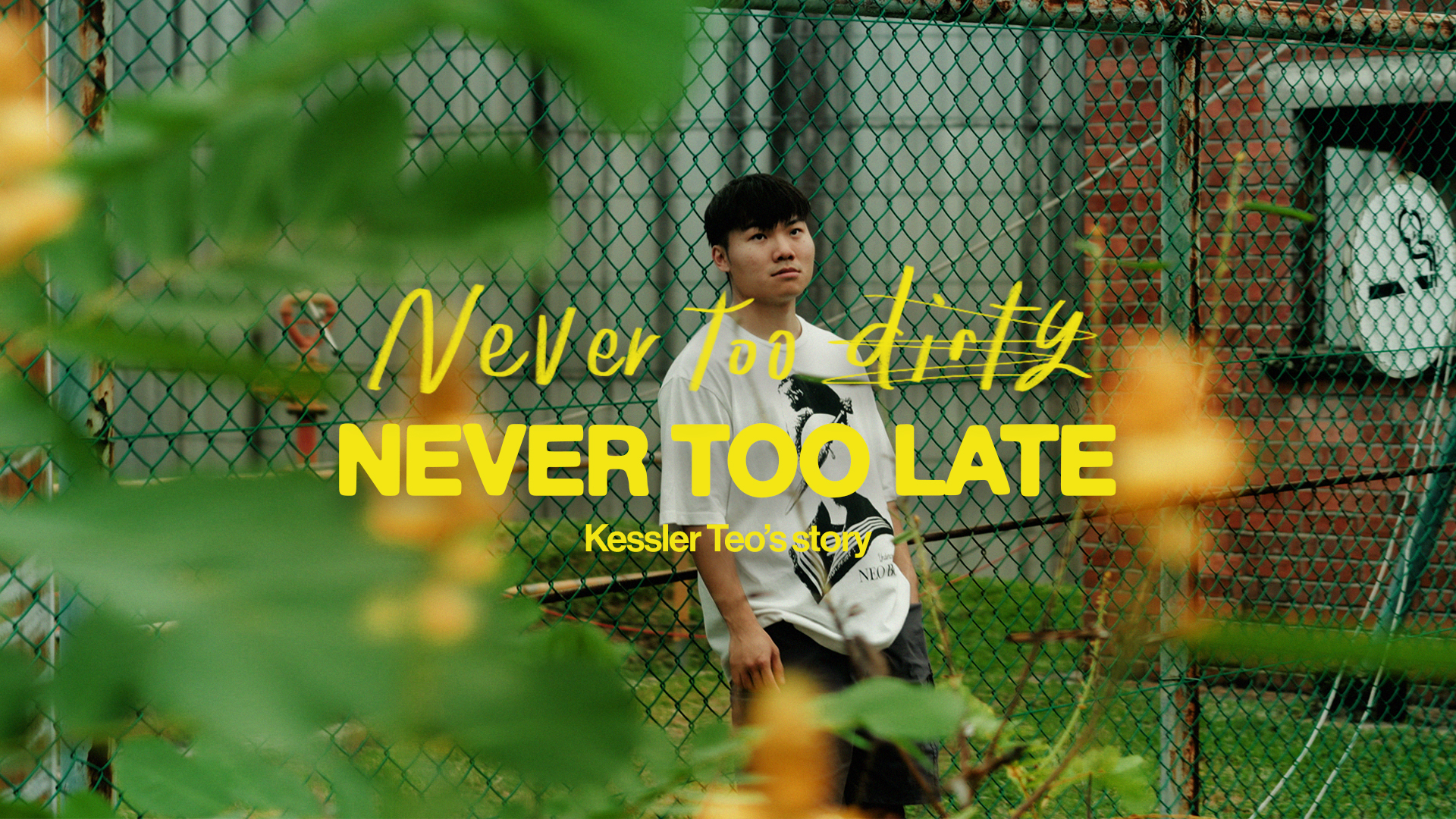“Is it Masterchef today?”
Nadzirah’s eyes sparkled with excitement. It’s a quiet Saturday morning but there’s a buzz of excitement in the air. Everyone’s come armed with pots and groceries.
It’s an unlikely bunch we have in the kitchen today: Ze Qiang, an engineering student, together with exhibition designer Nadzirah and graphic designer Veneetha.
Their challenge for the day: To teach each other how to make a signature dessert from their own culture.
“I HOPE THIS WILL MAKE MY KAMPUNG PROUD”
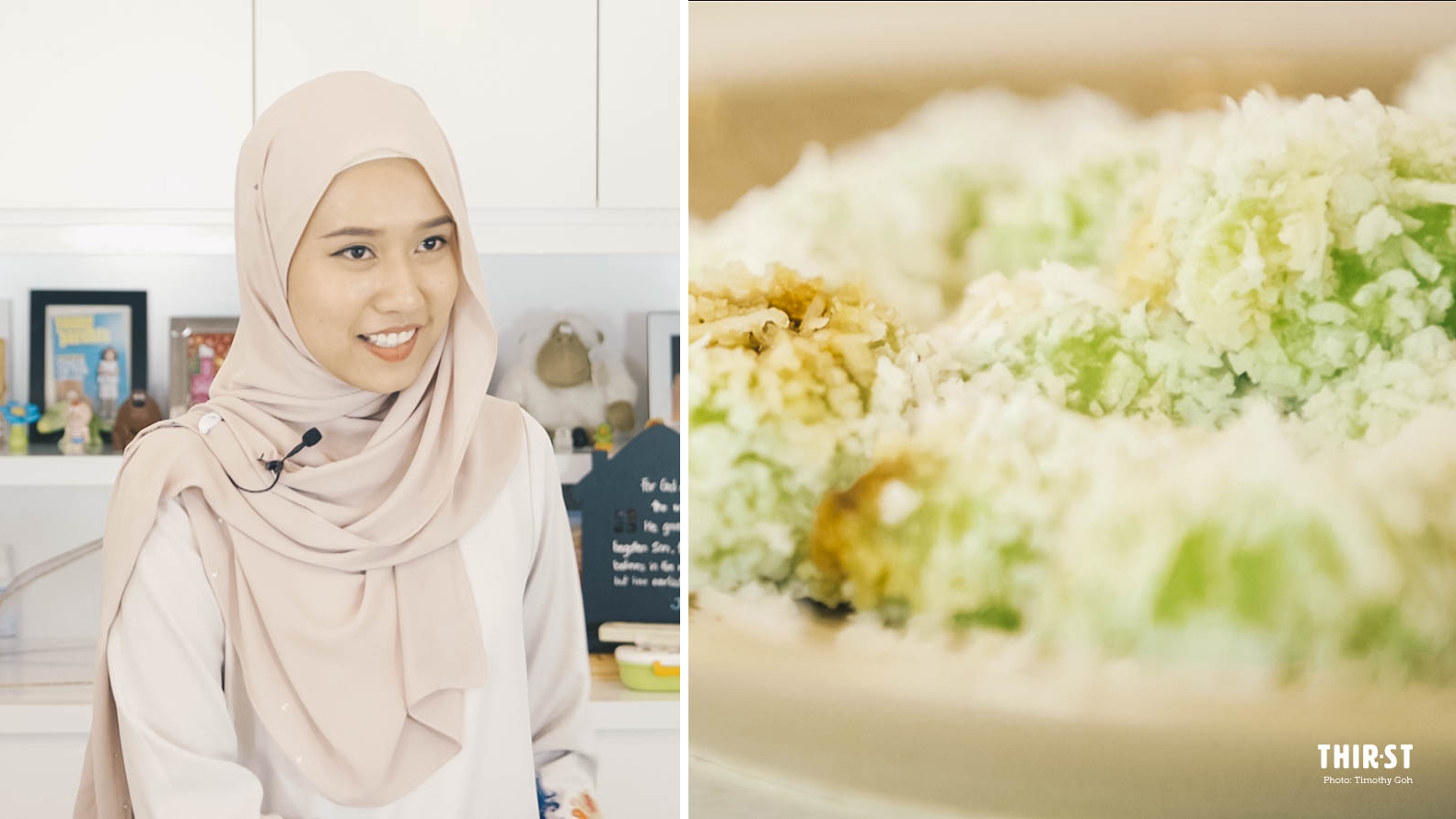
Nadzirah starts the ball rolling by explaining her dish for the day – ondeh-ondeh. This well-loved dish only requires a few simple, common ingredients.
The trio splits the work between them efficiently. Nadzirah instructs Ze Qiang to cut the gula melaka – the ingredient crucial to the dish – into little cubes, along with the pandan leaves into very precise 4cm strips. After all, precision is key to Nadzirah’s interior design background.
“Pandan leaves are there to add flavour and for the coconut to last longer. That’s what my mum told me,” Nadzirah says confidently as she puts the grated coconut into the steamer and begins on the dough.
“Why do you use glutinous rice flour?” Ze Qiang asks.
“Err … actually I don’t know, ask my mum.” Nadzirah answers with a little laugh. This is far from the only time their mums are mentioned throughout the day, as the source of the recipes and tips.
“I hope this will make my kampung proud!”
A TRADITIONAL DISH WITH A MODERN TWIST
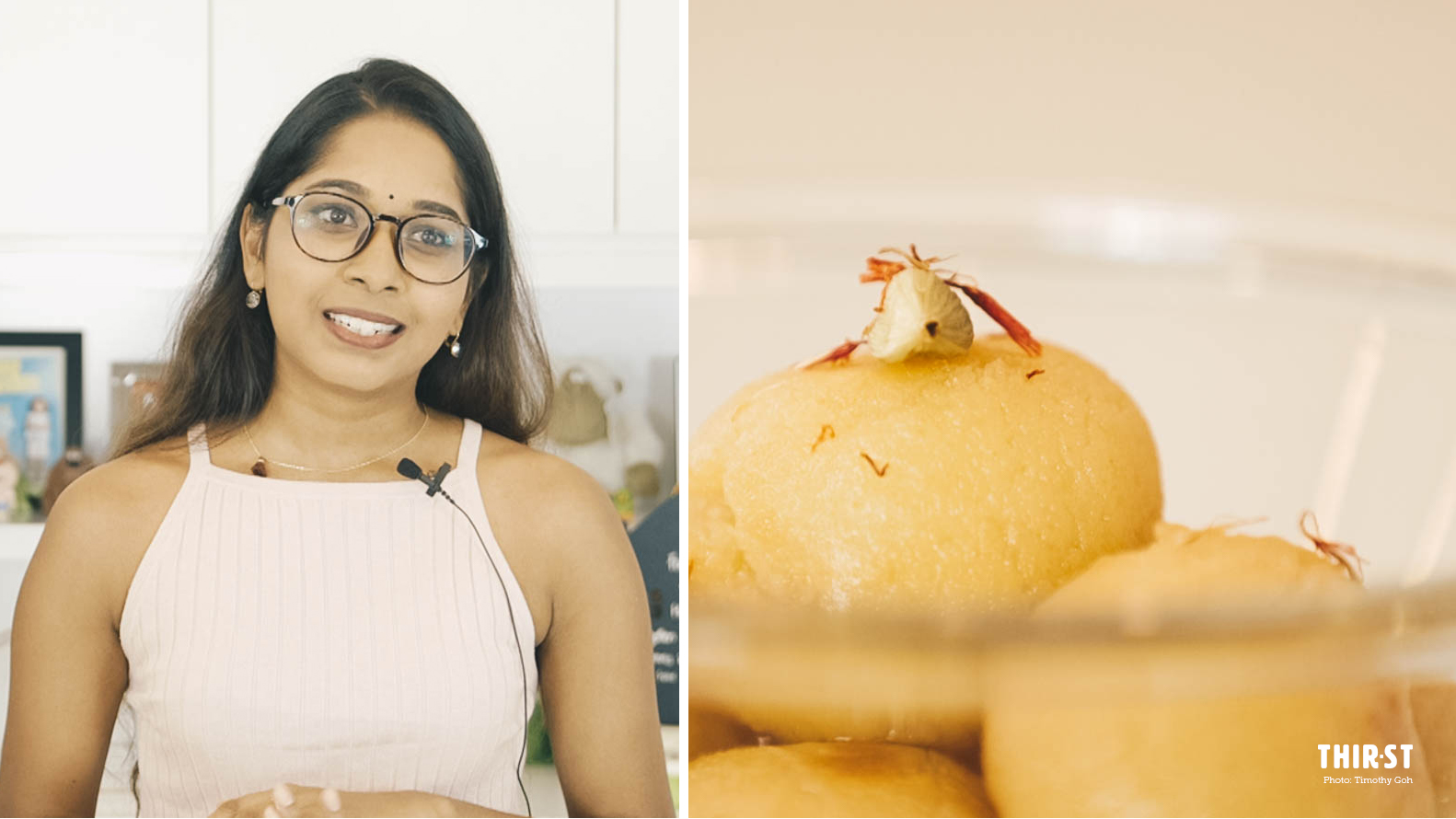
“I’ve actually never made gulab jamun myself before.”
Veneetha looks sheepishly at Ze Qiang and Nadzirah. Out of the snacks her Indian family makes on Deepavali, gulab jamun is the easiest to make. And it is also her personal favourite.
“It’s is a milk-solid-based ball that is deep fried and soaked in syrup. Many people think that it originated from India. But we kind of stole it from the Persians.”
Everyone laughs. The dry ingredients are poured into the mixing bowl. By now, the trio has clearly warmed up to each other in the kitchen.
“Before I saw the recipe, I didn’t know that it was mainly milk powder. I always thought that it was made of something luxurious.”
Ze Qiang asks Veneetha about the origin behind the name of the dish.
“Gulab refers to rose water in Persian, so they used to use rose water-infused syrup. Jamun refers to an Indian fruit with a similar size and shape.”
“Food does bring people together!”
They split the load of forming evenly-shaped balls from the dough. No one’s made this before, so the trio decides to experiment frying just one ball first.
Nothing happens.
“I guess it is a little too calm,” Ze Qiang says, laughing. Then they realise that the stove hasn’t been switched on and everyone breaks into laughter.
“When I told my mum I was going to add honey to the syrup, she was a little doubtful. I think it’s a modern take to this dish,” Veneetha explains as she starts on the syrup. The traditional recipe uses cane sugar.
The frying continues and the sweet fragrance of milk fills the air. Nadzirah shares about her experience buying gulab jamun from a stall at Little India.
“The uncle just put that one ball and the syrup into a teh peng bag, I was just carrying it around like that!” She recalls the overwhelming sweetness from that time, but is excited to try it again today with Veneetha’s modern spin on the recipe.
For the rest of us, it is our first time ever hearing of this dessert.
AN INHERITED FAMILY RECIPE
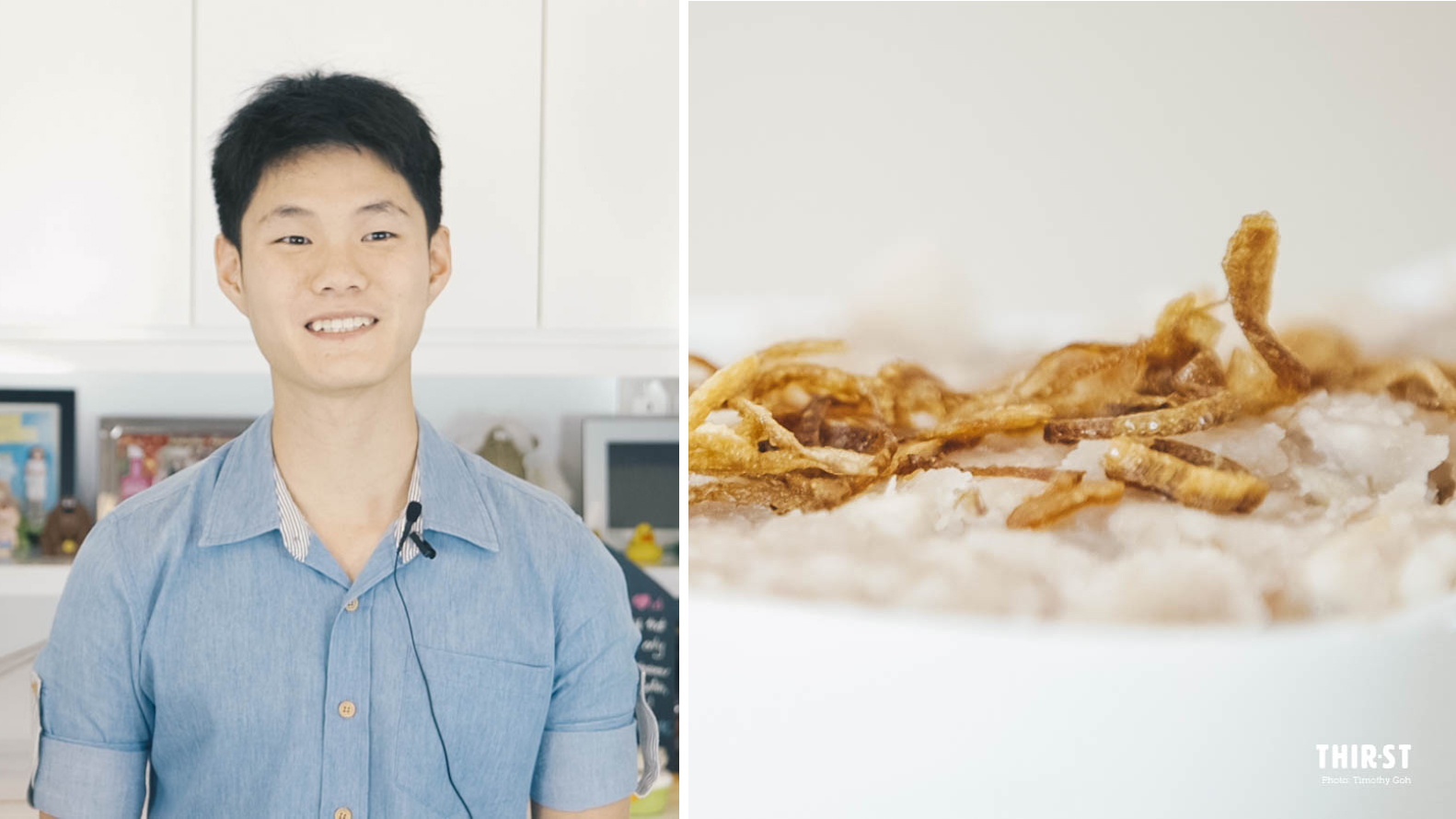
It’s almost lunchtime as they move swiftly through the preparation of the ingredients for the final fish. Nadzirah attempts at chopping the yam into chunks. Looking at the amount of strength she is using, Ze Qiang steps in to take over.
“Orh nee is served at almost any Chinese restaurant. It is usually paired with gingko nuts and pumpkin. But this recipe is passed down … It’s like a family recipe,” he says.
“My mother was quite insistent that I made this.”
They practise pronouncing the name of the dish while waiting for the yam to be ready. Veneetha and Nadzirah repeat the words after Ze Qiang slowly a few times. Singaporeans know it as orh nee, meaning yam paste in Teochew.
The sliced shallots are lowered into the hot oil. Everyone is mesmerised by the fragrance and sizzling sound of the shallots being fried. Ze Qiang motions for the girls to try the perfectly fried shallots. Everyone’s eyes widen upon tasting the shallots and Nadzirah goes back in for more.
“This will go so well with mee soto. Or briyani!”
HARMONY IN DIVERSITY
It is finally time to taste the three dishes after a hectic morning.
As they taste the dishes before them, their eyes light up in delight. Smiles appear on their faces.
“I would never have thought of having shallots in my dessert,” Veneetha casually comments.
Nadzirah is also pleasantly surprised that the gulab jamun turned out to be less sweet than she expected. Veneetha guesses that it’s due to the honey substituting the cane sugar, as well as a shorter soaking time. Traditionally, the balls are soaked in the syrup overnight.
“Well, I like it better this way!”
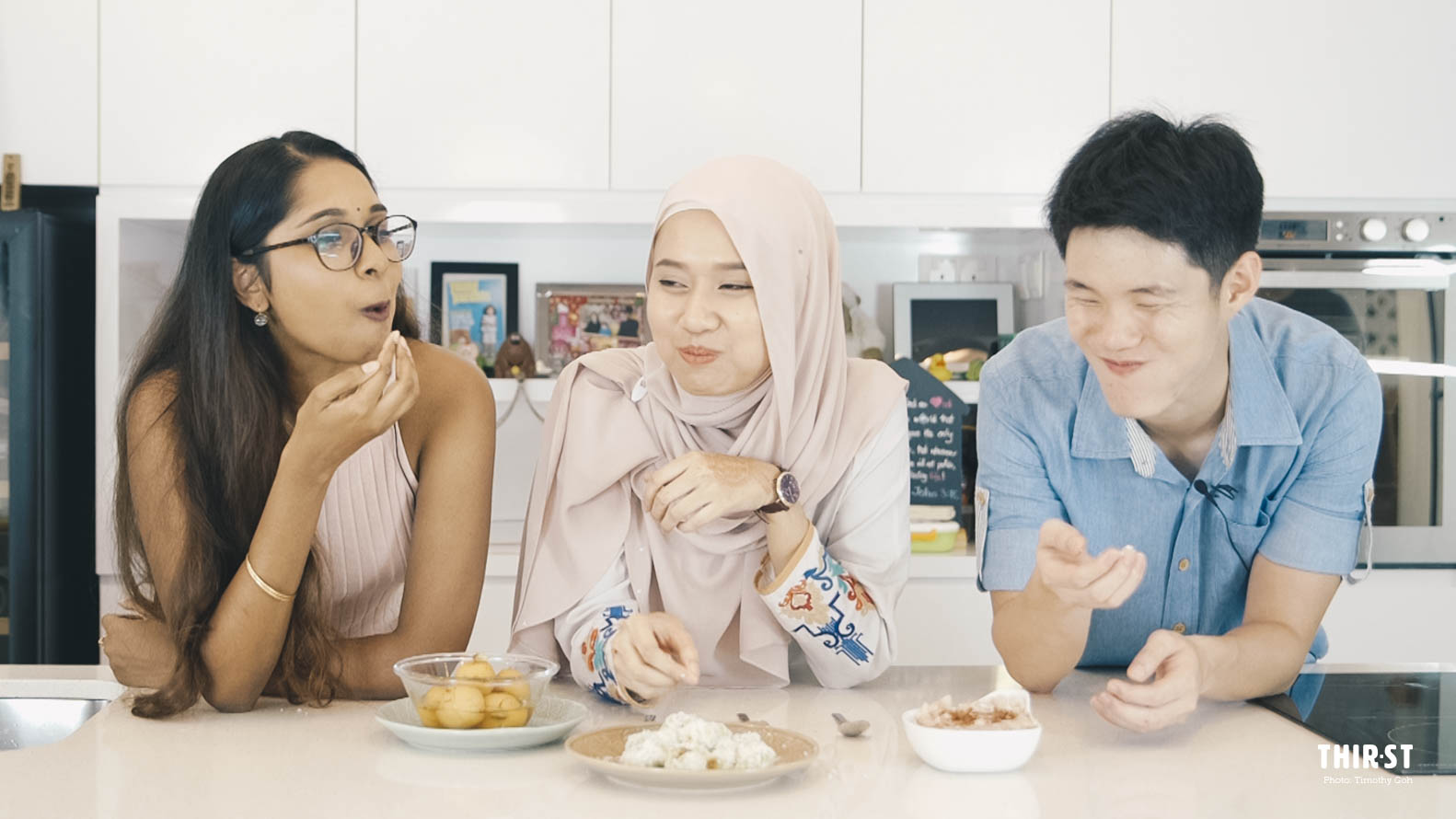
As they eat, laughter fills the air, along with nods of approval, relieved faces and satisfied tummies. Which is your favourite, we ask the three.
Eyes dart left and right. They say it’s hard to pick a favourite because they’re all so differently unique: The savoury yam paste, chewy ondeh-ondeh and not-so-sweet gulab jamun.
We realise that that’s the trademark of Singapore – where vibrant and diverse cultures live together in harmony.
As Ze Qiang puts it, the diversity we have is what makes Singapore unique.
“Having diversity in races adds colour to our country. For example, the different kinds of food that each race brings gives us a variety of food which allows us to experience the different flavours we would not have known otherwise. This includes the traditions and cultures too.”
Nadzirah agrees that it is important for Singaporeans to make the effort to get to know different races and understand the different cultures.
“Getting to know different races, understanding different cultures just add colours to your life. Colours are very important to me. I don’t like to lead a dull life.
“I’ve learnt that there are so many other desserts out there that we have yet to try. If we just stick to what we know, our own culture, we tend to miss out on a lot.”
RESPECTING ROOTS
The trio also acknowledged how blessed we are to live in a country where there’s an intrinsic respect for each other’s roots, and where we have a culture of openness in asking and learning.
Ze Qiang believes that being conscious and respectful towards each other’s beliefs and culture is also key to maintaining racial harmony in such a diverse society. Everyone has a part to play in this.
“I think generally Singapore is quite harmonious. However, there can be some unintentional segregation that happens naturally if we are not careful. Like how people tend to stick to their own kind. We are also bound to have conflicts over different beliefs and cultures,” he says.
“But if everyone takes the effort to understand and reach out to the other races, everyone can live in harmony.”
“Having diversity in races adds colour to our country.”
Veneetha adds that the openness to working together is key.
“Before coming into this, I thought the other recipes were going to be complicated and probably something that I will never be able to do on my own. But with some help and guidance from my friends, the recipes that were shared turned out to be surprisingly simple and I will definitely make them again.”
She also felt that finding a common interest also helps to bridge the gaps between people and their differences.
“This simple experience made me more knowledgable about the other cultures in Singapore and I think everyone should make an effort like this. Food does bring people together!”
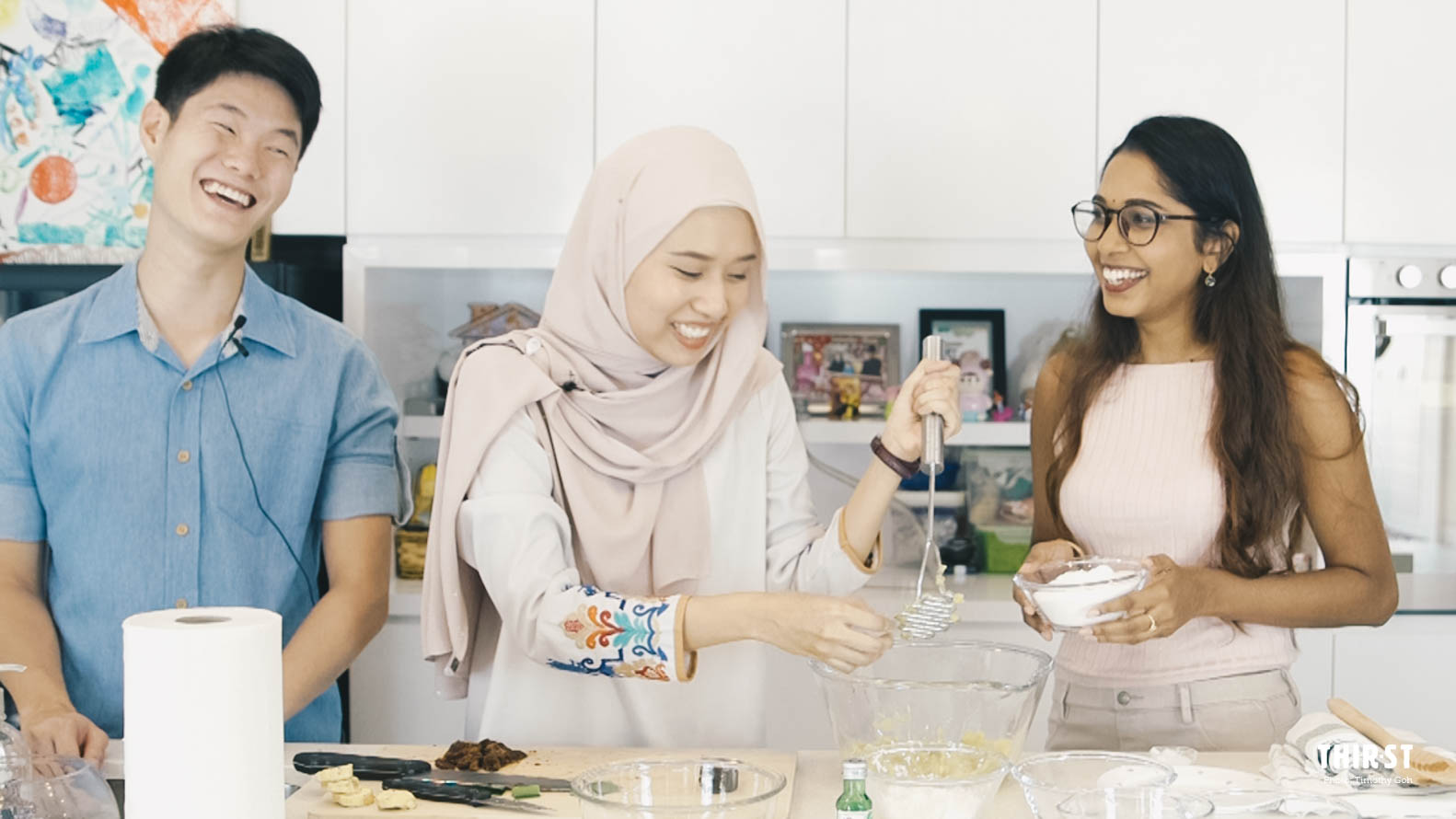
Nadzirah recalls that as part of the preparation process prior to this shoot, everyone brought brand new utensils and crockery to ensure that halal standards are respected and adhered to.
While this made things logistically more complicated and troublesome, everyone chipped in without complaints.
“Thank you for complying to the halal standards, I really appreciate it,” she tells the other two.
Singapore: We may be made up of different ingredients and cultures, but we’re still good and sweet together.






